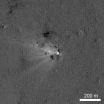(Press-News.org) AMHERST, Mass. – Binge drinking can have lasting effects on brain pathways that are still developing during adolescence, say neuroscience researcher Heather N. Richardson and her colleagues at the University of Massachusetts Amherst and Louisiana State University. Results of their study using a rodent model of adolescent drinking appear in the October 29 issue of The Journal of Neuroscience.
Richardson says, "Adverse effects of this physical damage can persist long after adolescent drinking ends. We found that the effects of alcohol are enduring." She adds, "The brains of adolescent rats appear to be sensitive to episodic alcohol exposure. These early experiences with alcohol can physically alter brain structure, which may ultimately lead to impairments in brain function in adulthood."
She and her colleagues believe their study is the first to show that voluntary alcohol drinking has these effects on the physical development of neural pathways in the prefrontal cortex, one of the last brain regions to mature.
In humans, early onset of alcohol use in young teenagers has been linked to memory problems, impulsivity and an increased risk of alcoholism in adulthood. Because adolescence is a period when the prefrontal cortex matures, Richardson adds, it is possible that alcohol exposure might alter the course of brain development. Rodent models used in this study are documented to have clinical relevance to alcohol use disorder in humans.
The prefrontal cortex is the center of decision-making and regulates emotions and impulses. Specifically, the researchers explored the physical damage to fatty myelin sheaths that wrap and insulate axons, the "wires" that transmit information from one neuron to another. Myelin increases the speed at which electrical impulses travel along axons, enhancing information-processing and cognitive performance.
Richardson and her colleagues doctoral candidate and first author Wanette Vargas, Lynn Bengston and Brian Whitcomb of UMass Amherst, with Nicholas Gilpin of Louisiana State University, conducted this study with support of a two-year grant from the National Institute on Alcohol Abuse and Alcoholism at the National Institutes of Health.
The researchers used preclinical rodent models to explore how alcohol affects myelin in the prefrontal cortex. They gave male rats in early adolescence, several bouts of access to sweetened alcohol or, in controls, the same amount of sweetened water daily for two weeks. Like teenagers, rats love sweet beverages and are willing to work for this reward by pressing on a lever in an operant box. This approach supported the development of a behavioral reinforcement circuit and generated a high amount of voluntary alcohol consumption during the rats' early adolescent developmental period.
The researchers examined myelin at the end of the binge-drinking period and found that it was reduced in the prefrontal cortex of the binge drinking adolescent rats. In a separate experiment, they examined myelin several months later after testing for adult drinking behaviors and found that adolescent alcohol drinking caused significant white matter loss and damage to myelin in the prefrontal cortex.
They also noted that the effects of adolescent alcohol were comparable to what was observed after alcohol dependence in adulthood. The duration and amount of alcohol exposure was much less in the adolescent drinking model compared to the adult dependence model. This shows that the adolescent brain may have heightened sensitivity to alcohol, Richardson and colleagues say.
Another interesting finding, they note, is that prefrontal white matter loss was greatest in the animals that showed the most robust increases in drinking after short periods of abstinence in relapse drinking tests in adulthood. This suggests that "perhaps this prefrontal fiber track is important for controlling behavior and may help keep animals from over-doing it when they are given the chance to drink again after taking short breaks from alcohol," the authors point out.
In a final experiment, the researchers found that heavy adolescent alcohol drinking, but not sweetened water, predicted poor performance on a working memory task in adulthood. This supports the idea that the enduring effects of alcohol may not only be structural but could also affect cognitive functions that are dependent on a healthy prefrontal cortex.
Overall, they conclude, "These findings establish a causal role of voluntary alcohol on myelin and give insight into specific prefrontal axons that are both sensitive to alcohol and could contribute to behavioral and cognitive impairments associated with early onset drinking and alcoholism."
Richardson says she and her colleagues hope their findings lead to new therapeutic strategies in treating alcohol use disorder and new approaches for families and professionals who work with adolescents. Further, "results from this work focusing on the prefrontal cortex could also help us better understand the function of myelin and how myelin deficits may contribute to other psychiatric conditions associated with prefrontal impairments such as impulsivity, Tourette syndrome and schizophrenia."
INFORMATION:
WASHINGTON, DC — Heavy drinking during adolescence may lead to structural changes in the brain and memory deficits that persist into adulthood, according to an animal study published October 29 in The Journal of Neuroscience. The study found that, even as adults, rats given daily access to alcohol during adolescence had reduced levels of myelin — the fatty coating on nerve fibers that accelerates the transmission of electrical signals between neurons. These changes were observed in a brain region important in reasoning and decision-making. Animals that were ...
NASA's Lunar Reconnaissance Orbiter (LRO) spacecraft has spied a new crater on the lunar surface; one made from the impact of NASA's Lunar Atmosphere and Dust Environment Explorer (LADEE) mission.
"The Lunar Reconnaissance Orbiter Camera (LROC) team recently developed a new computer tool to search Narrow Angle Camera (NAC) before and after image pairs for new craters, the LADEE impact event provided a fun test, said Mark Robinson, LROC principal investigator from Arizona State University in Tempe. "As it turns there were several small surface changes found in the predicted ...
How does a normal cellular process derail and become unhealthy?
A multi-institutional, international team led by Virginia Tech researchers studied cells found in breast and other types of connective tissue and discovered new information about cell transitions that take place during wound healing and cancer.
The results were published in a September issue of the journal Science Signaling.
During development, cells change forms and regroup from tight packs of epithelial cells to more mobile, loose arrays of mesenchymal cells.
The cell changes, known as an epithelial ...
Montreal, October 28, 2014 – The Montreal Heart Institute Research Centre is once again pushing the limits of knowledge in personalized medicine. A meta-analysis combining the results of several pharmacogenomic studies and involving over 40,000 research subjects now makes it possible to demonstrate a different response to statins according to the patient's gene profile. This important contribution of two Montreal researchers from the Montreal Heart Institute (MHI), Dr. Jean-Claude Tardif, Director of the Research Centre and Dr. Marie-Pierre Dubé, Director of ...
Fewer women than men are treated with dialysis for end-stage kidney disease, according to a new comprehensive analysis of sex-specific differences in treatment published this week in PLOS Medicine. The results of the study, conducted by Manfred Hecking with Friedrich Port and colleagues from Arbor Research Collaborative for Health in Ann Arbor, Michigan, suggest that these findings call for further detailed study for the reasons underlying the sex-specific differences in end-stage renal disease treatment.
Chronic kidney disease often progresses to end-stage renal disease, ...
SAN FRANCISCO: A simple intervention designed to raise awareness about the use of communication devices while driving reduced the incidence of distracted driving by 50 percent in hospital personnel, according to findings from a single site study presented today at the 2014 Clinical Congress of the American College of Surgeons.
Driving distracted–caused by any activity that steals a driver's attention from the road–is at an all-time high. In 2012, an estimated 421,000 people were injured in accidents involving distracted driving and 3,328 were killed as a result ...
A population of endangered giant tortoises, which once dwindled to just over a dozen, has recovered on the Galapagos island of Española, a finding described as "a true story of success and hope in conservation" by the lead author of a study published today (Oct. 28).
Some 40 years after the first captive-bred tortoises were reintroduced to the island by the Galapagos National Park Service, the endemic Española giant tortoises are reproducing and restoring some of the ecological damage caused by feral goats that were brought to the island in the late 19th century. ...
New Haven, CT, Oct. 28 2014 – Each year, malaria kills over 600,000 people, more than half of them children. In a study published today in PLOS ONE , researchers with the non-profit Innovations for Poverty Action (IPA) and Harvard University found that simple text message reminders to take malaria medication can help in the fight against the disease by boosting the rates at which patients complete their medication regimen.
One challenge in fighting malaria is that the disease has evolved resistance to many drugs that formerly worked, according to Julia Raifman, ...
This news release is available in German.
In addition to their song, songbirds also have an extensive repertoire of calls. While the species-specific song must be learned as a young bird, most calls are, as in the case of all other birds, innate. Researchers at the Max Planck Institute in Seewiesen have now discovered that in zebra finches the song control system in the brain is also active during simple communication calls. This relationship between unlearned calls and an area of the brain responsible for learned vocalisations is important for understanding the ...
JUPITER, FL, October 28, 2014 – Scientists from the Florida campus of The Scripps Research Institute (TSRI) have uncovered a major contributor to Huntington's disease, a devastating progressive neurological condition that produces involuntary movements, emotional disturbance and cognitive impairment.
Using an animal model of Huntington's disease, the new study shows that signaling by a specific protein can trigger onset of the disease and lead to exacerbation of symptoms. These findings, published in the October 28, 2014 issue of the journal Science Signaling, offer ...





